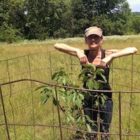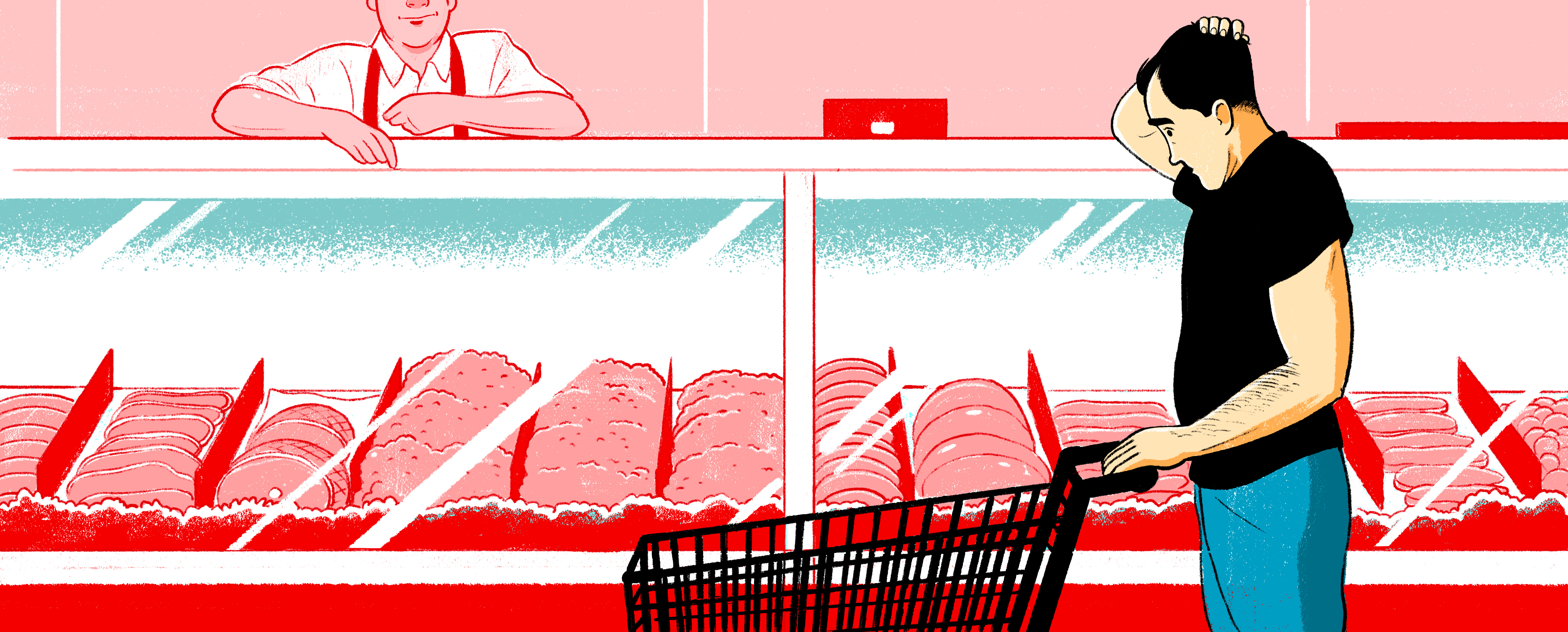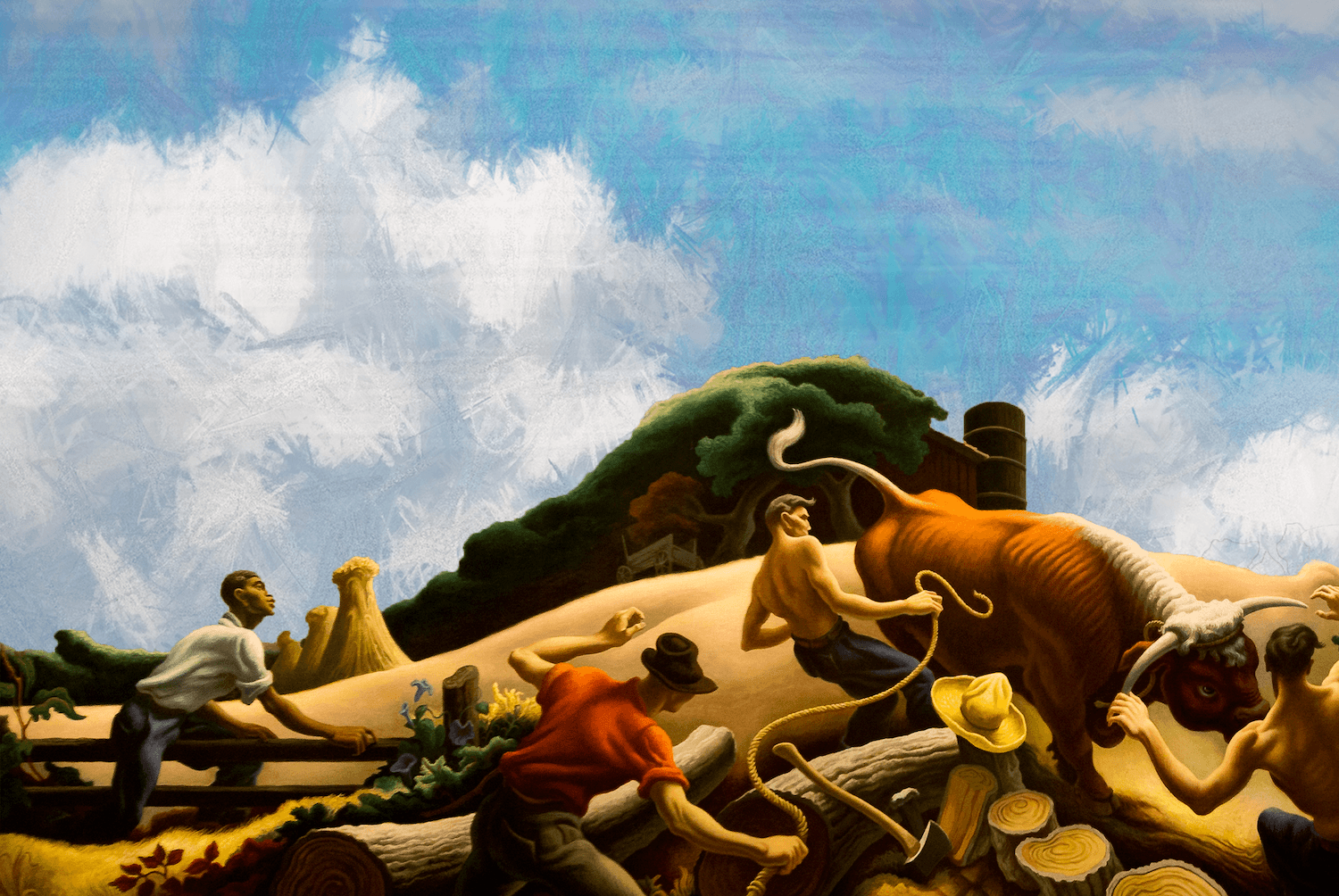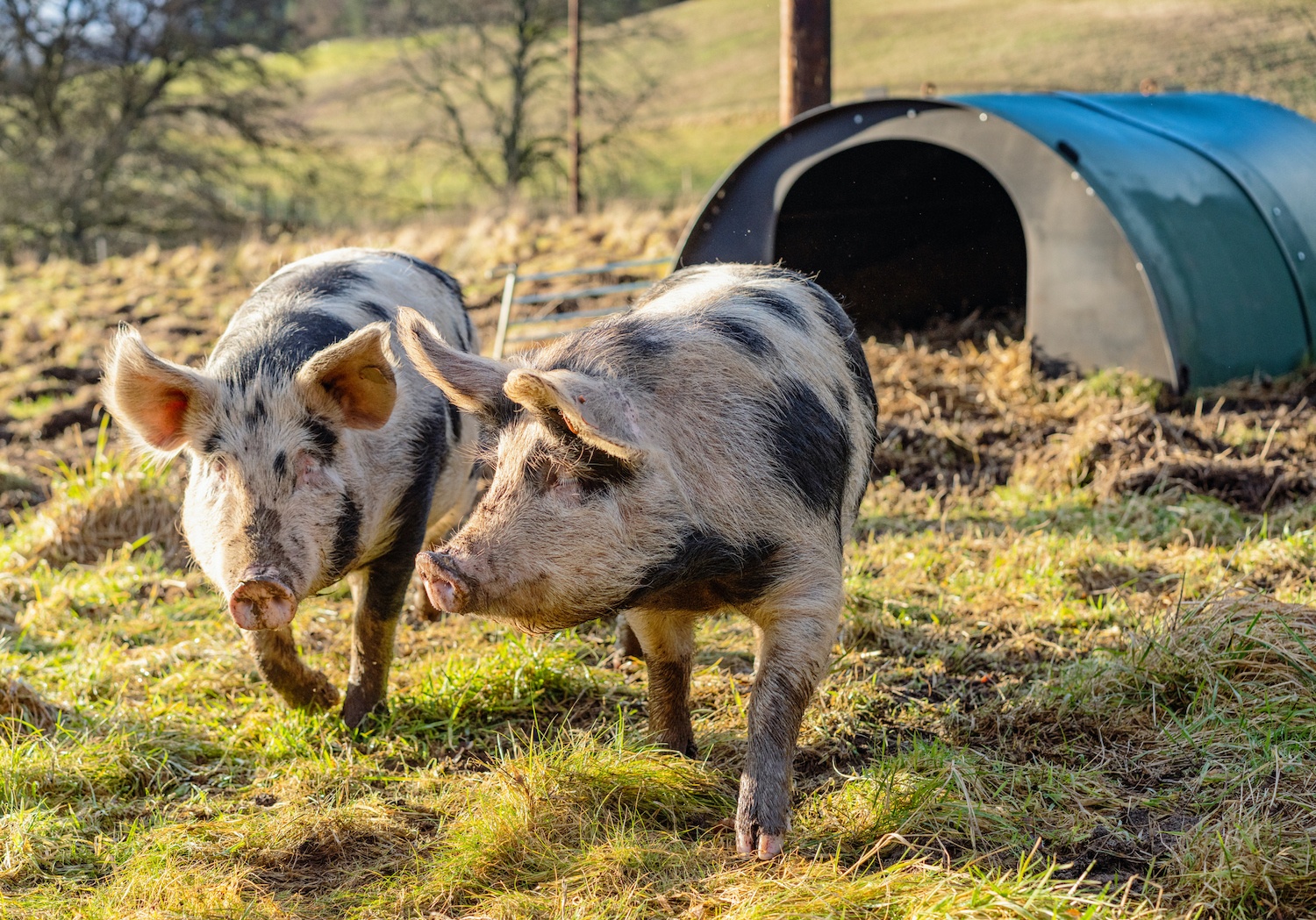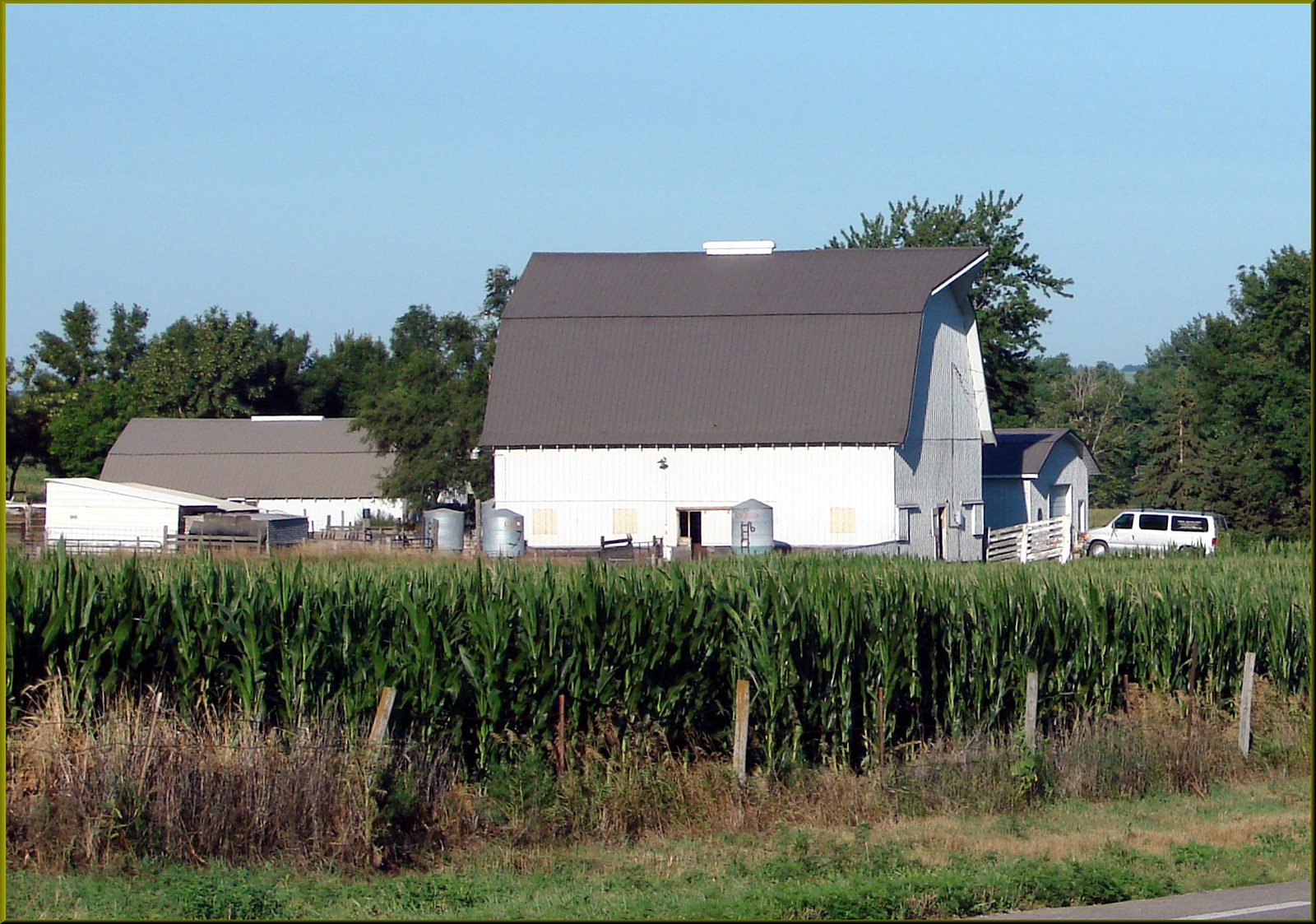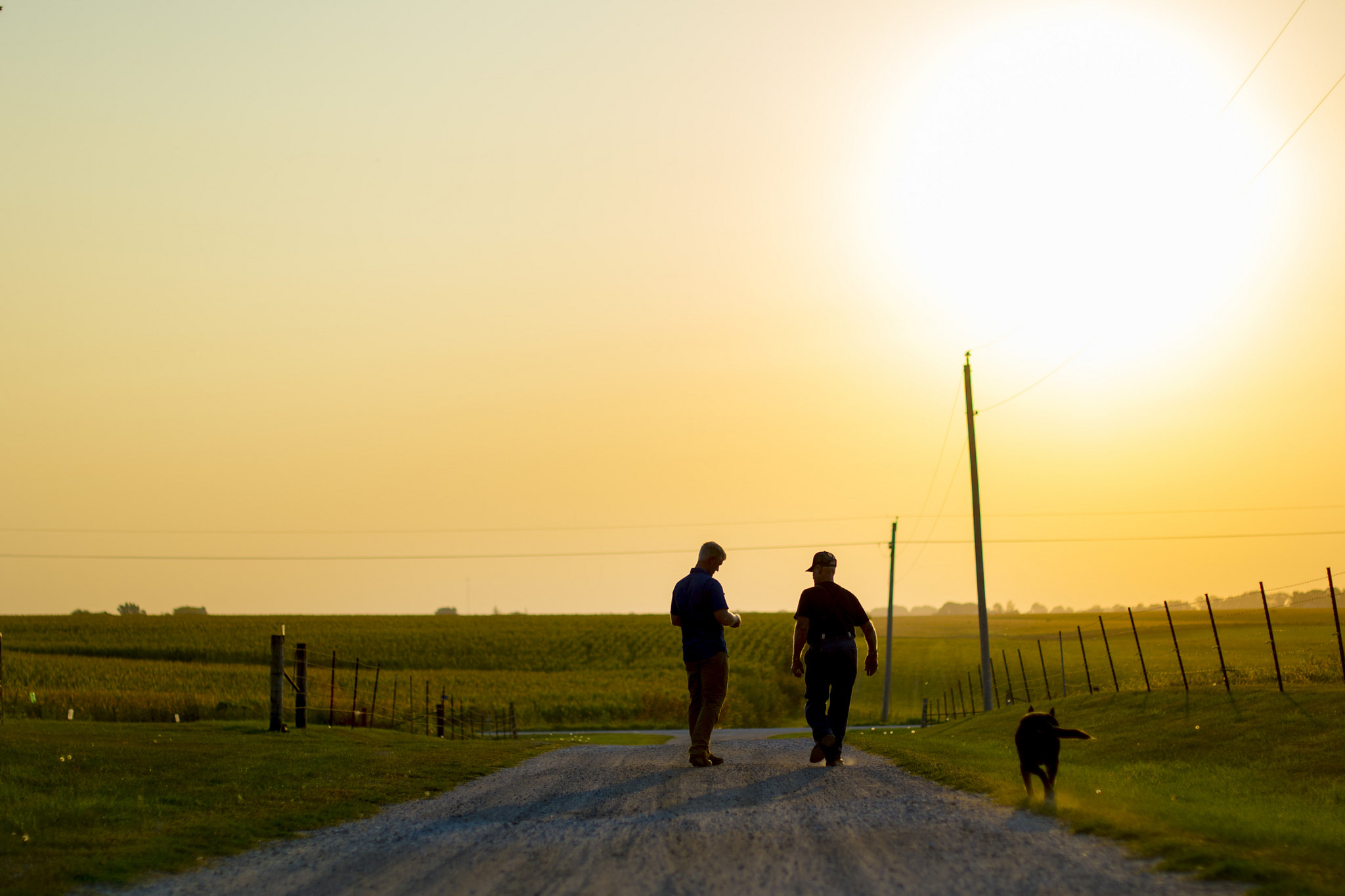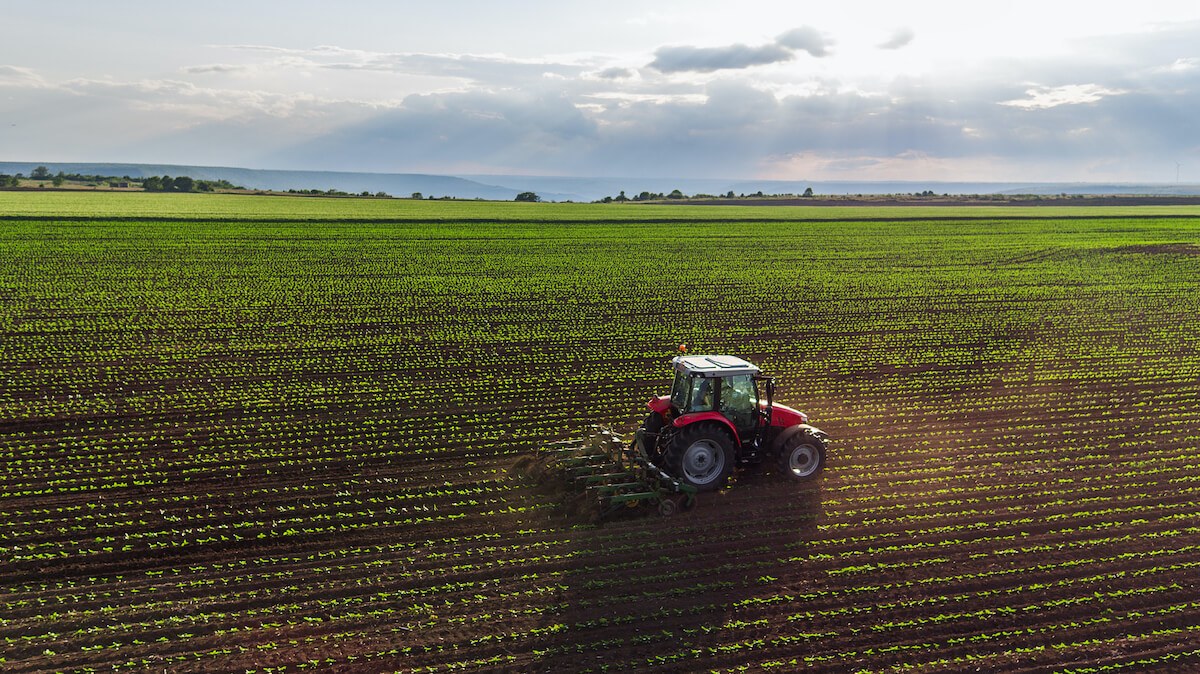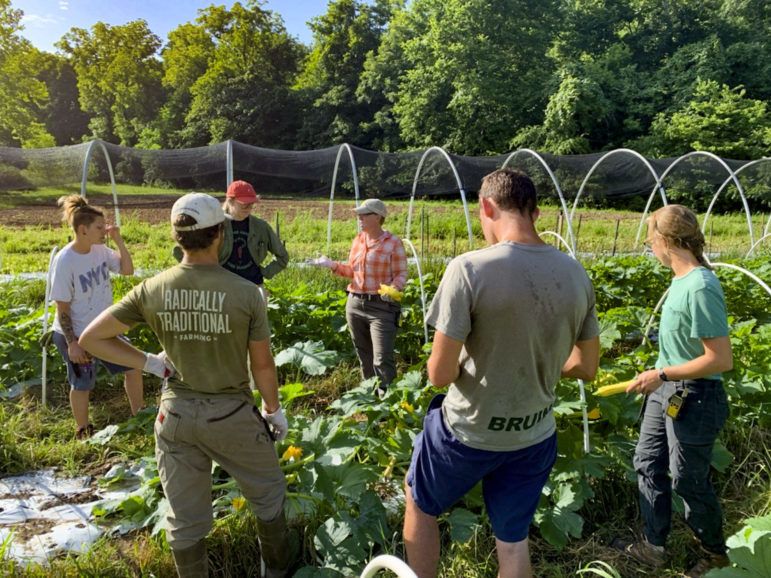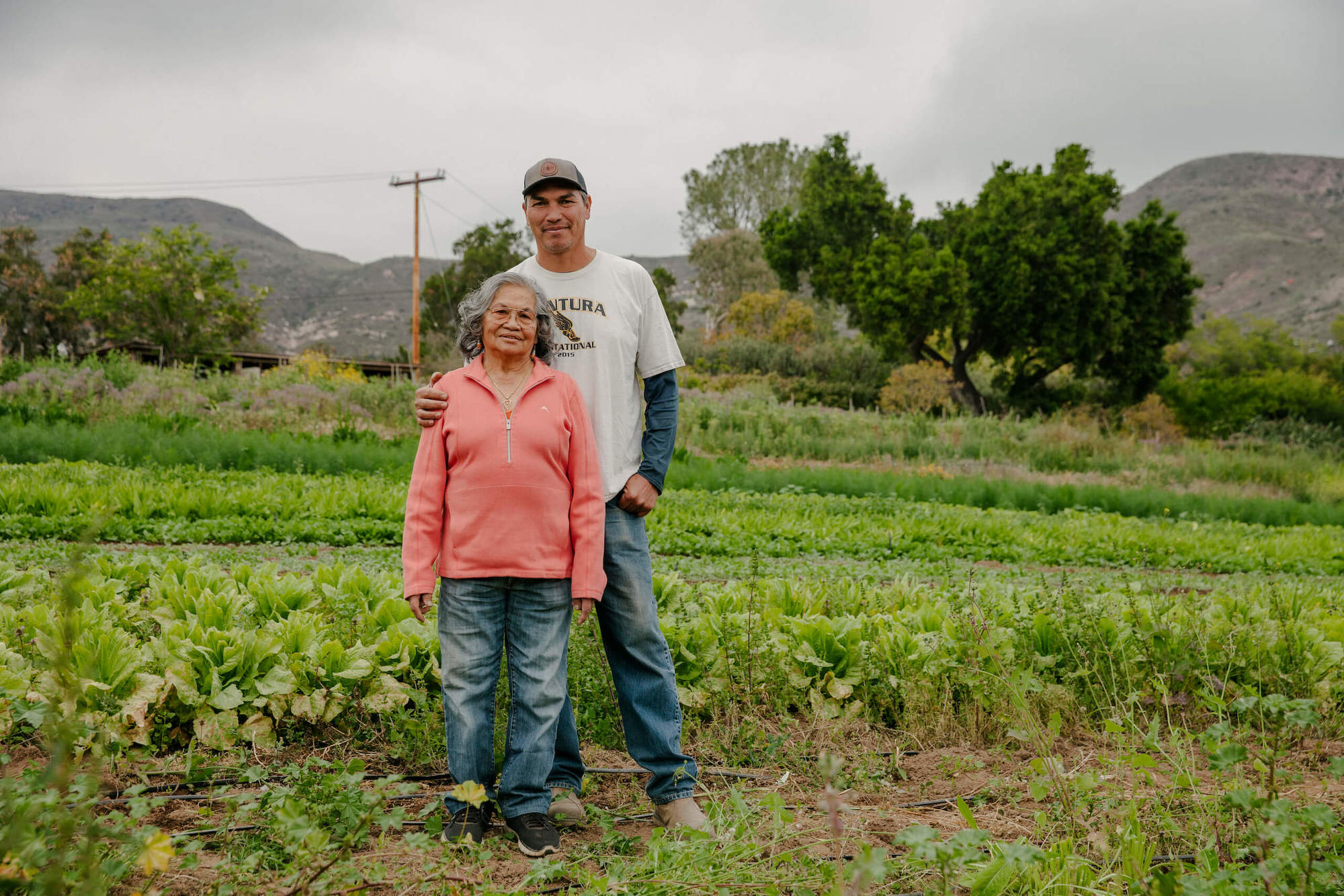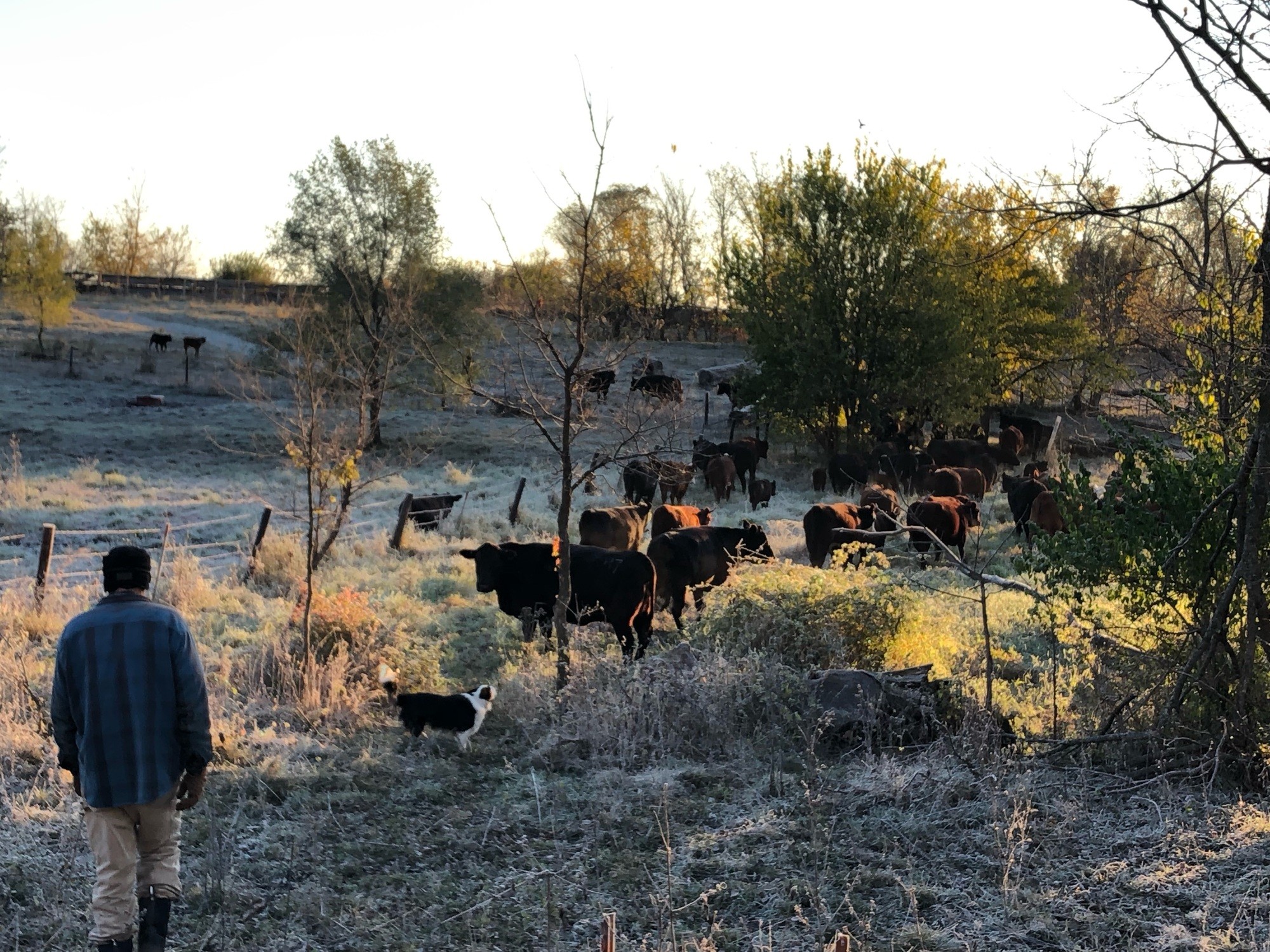
Beth Hoffman
Beth Hoffman moved from the Bay Area to rural Iowa two and a half years ago to take over a conventional farm. She thought she knew what she was getting into.
Journalists who cover U.S. food and agriculture can find themselves face-to-face with unpleasant truths about how our food lands on the table. The industrial meat system is financially predatory, often inhumane, and environmentally unsustainable. Farmland is a hard-won commodity, often held by generations-old family concerns, or bought up by distant investors for increasingly large sums. The federal government incentivizes and prioritizes monocrops like soy and corn. And farmers who prioritize more sustainable practices largely find the path to financial success untenable—even those who are able to fetch premium prices for their produce and meat.
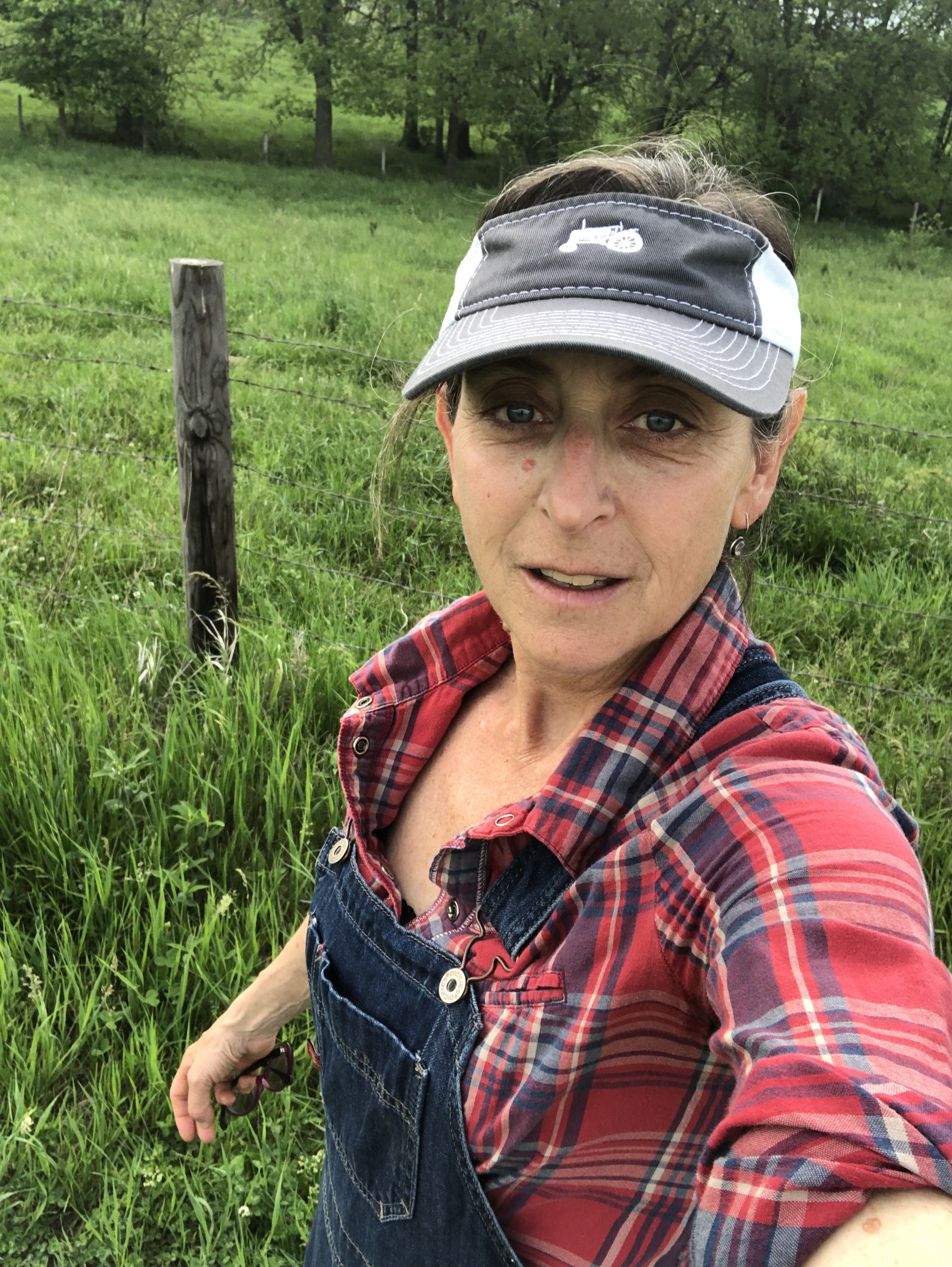
Beth Hoffman
Beth Hoffman, seasoned agriculture reporter and journalism professor, decided to move to rural Iowa to become a farmer with her partner.
Enter Beth Hoffman, a seasoned agriculture reporter and journalism professor who knew all these things, yet chose to move thousands of miles from San Francisco to rural Iowa to make a go as a farmer. The 530 acres in Monroe County came from her partner John Hogeland, whose father was conventionally growing soy and corn and raising cattle. Hoffman and Hogeland immediately set to work to convert the farm into something more sustainable—both environmentally and financially—raising grass-finished cows, organic-in-practice veggies, even bringing goats on to the farm to help clear brush.
Still, it begs the question: For someone who was so intimately acquainted with farming’s challenges and outright perils, in a treacherous climate where countless farmers opt out of the trade every year, what made her go all in? We caught up with Hoffman, who was in the midst of toggling between autumn farm duties and promotion of her new book, Bet the Farm: The Dollars and Sense of Growing Food in America (Island Press, 2021), to hear what made her take such a radical leap, and how her project is doing, two years in.
—
When I first started freelancing for weekly newspapers in Salt Lake City back in the late nineties, my focus naturally gravitated towards food coverage. This was kind of cemented during grad school at UC Berkeley, where I got to study under Michael Pollan. I was exposed to many different perspectives there—you might be surprised to hear it isn’t just a “cult of sustainable ag reporting”—that was well-matched with my natural skepticism about everything.
John was my neighbor when I moved to Berkeley in 2007; he told me in our very first conversation that he planned to take over the family farm in Iowa after his kids were all grown up. Then once we were dating, and later married, we started spending summers here in Iowa. I began to have my own relationship to this place, and I thought about how I’ve studied this subject and written on farming for so long, and how it would be thrilling to try it out in practice.
It became a little bit of a game, to be honest: Could we get John’s dad Leroy to lease us the farm? He’s a very stubborn guy, now in his late 80s, and he’s farmed the same way his entire life—conventional corn, soybeans, and cattle. And to be fair, here we were coming in and saying, ‘Oh, we’re going to try all these different ways of growing food that we read about in books, organic farming and all that.’ I can see why Leroy was skeptical that we’d be able to pull it off. Who were we to think we knew better?
The learning curve is extreme, with every aspect of this work. There are a million practical considerations at all times.
If I had come out here by myself, I honestly don’t think there’s any way I could have pulled it off. At least John grew up around cattle and driving big machinery; he had some baseline level of knowledge. I think about this a lot, like if you just loved gardening and had some romantic visions of farming and decided to try it out full-time, how could you ever pull it off?
The learning curve is extreme, with every aspect of this work. There are a million practical considerations at all times. What kind of forage should the cattle be eating to finish them on grass? How do you deal with flies if you’re not spraying? Feels like there’s some kind of technical thing that you need to know all the time, not to mention marketing, building a website, and finding people to buy your products.
“Ultimately this is a business”
I talk a lot in the book about the agrarian myth, this dream that you’re going to get your hands in the dirt, you’re going to live a simple life, that farmers are virtuous and are stewards of the planet, all while needing to nourish the community with healthy, fresh food. A lot of people end up saying things like, ‘I don’t want to sell these products for a high cost, because then only the affluent people in my community can eat this food. And there’s this sense of obligation to save the planet above making your farm a financially viable place to be. That is a lot of weight to put on farmers, especially those just starting out!
I think a lot about what “sustainable farming” really means. Even if you are trying to farm in environmentally responsible ways, if what you’re doing doesn’t cover the cost of production, and you’re not going to be able to make this work for longer than two or three years, then what is it actually accomplishing in the long run?
There’s this sense of obligation to save the planet above making your farm a financially viable place to be. That is a lot of weight to put on farmers, especially those just starting out!
And even if you can swing not making any money for a certain period of time, how viable is it for future generations if you have improved the fertility of the land, but haven’t built an enduring business? If I had a restaurant or if I made widgets, I’d want the brand to have value that I could actually sell or transfer after I’m done. But with farming, all too often people are just thinking about the health of the land or growing as much as they can, and not so much about their business.
I get that. It’s so challenging, especially at the beginning farmer level, just to get up and running and to accomplish the chores of the day. We’re also talking about a demographic of people who prefer to be outside, to work with their bodies. Very often, the marketing and building the business side of things feels like, ‘Oh, that’s the stuff that I’ll do later.’ But there’s a price that’s paid when that side of things is neglected.
Safety nets
In 2019 the median income for farmers was literally $300. Yes, it’s really great to work your butt off for an entire year for less than $300. A million farms made less than $300, and I’d say that was the impetus for my book. Like wait a minute, how are people doing this? And how have they done this for generations, what’s the history?
I learned a lot from the stories I wrote for The Counter on farm transition a few years ago. I saw that it was extremely difficult for many farm families. I went to Michigan, for example, and interviewed people who had transitioned the farm quite abruptly after a family member died. I was just sitting there with this young couple, and the guy had tears in his eyes; they were dairy farmers, with hundreds of thousands of dollars in debt. Frankly, I would be very surprised if they still have that farm.
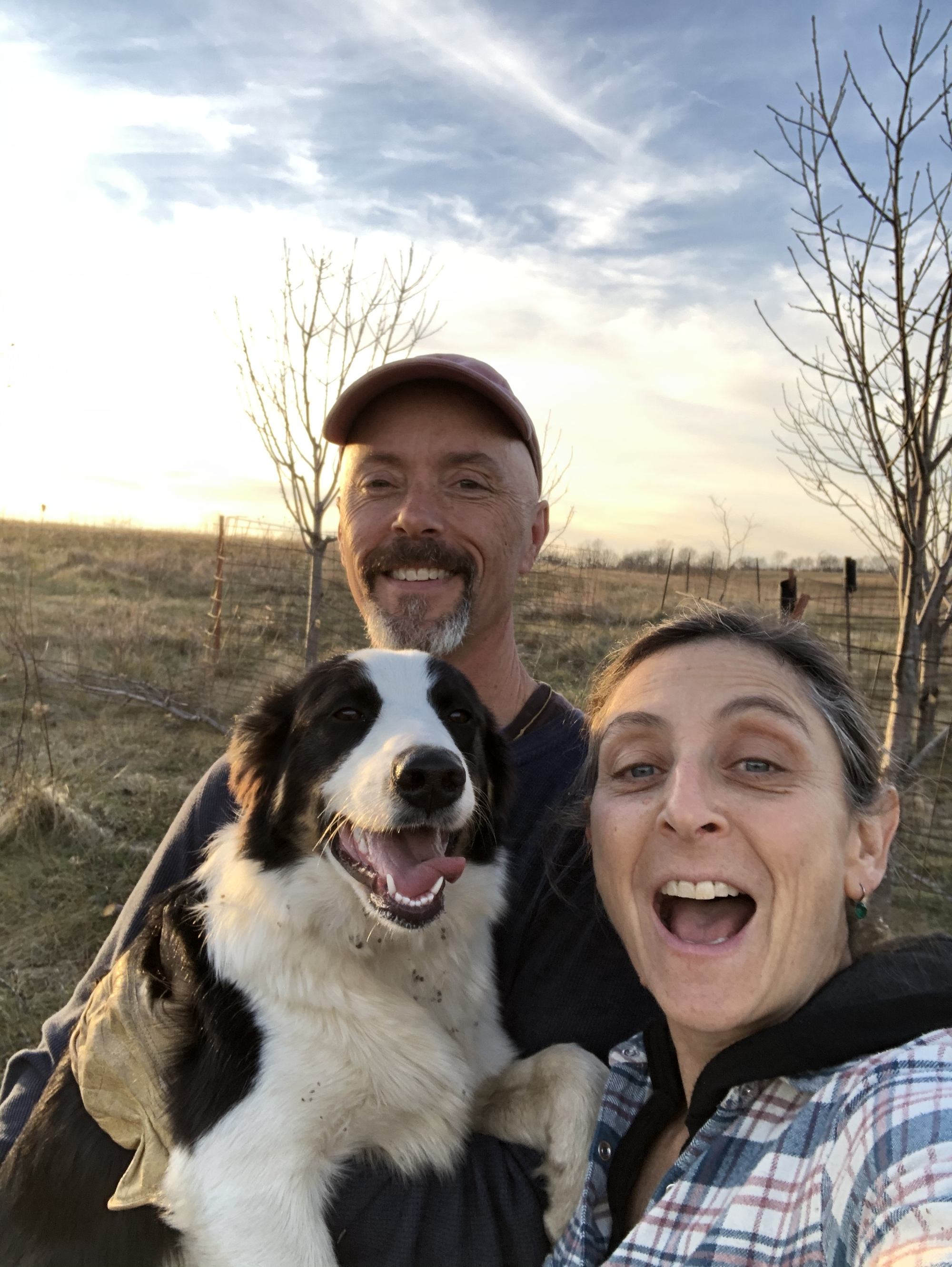
Beth Hoffman
Beth Hoffman and her partner John Hogeland with their dog on his family land.
I knew that the money we were talking about for our farm was much smaller. Also, I’m too cheap to go into debt; I wouldn’t be able to sleep at night. Like I discuss in the book, the idea that people borrow $750,000 to put up a chicken confinement facility on their farm, then they’re going to maybe make like $20,000 a year off it—I don’t think I could sleep. I’d lay awake worrying about how it was all going to work out in the end.
I also thought a lot about the fact that John and I came into this with privilege, with some family wealth with access to land. What about all the people who don’t? Not to mention the people—namely the Meskwaki and other tribes who lived in southern Iowa—who lost their land so that families like ours could still be here. There’s a direct correlation. I ALSO know that I’m probably not ever going to go hungry, even if we lost everything. I have money saved, I have family, I’d be okay.
And this is part of the problem—98 percent of farms are “family farms” and 96 percent of landowners are also white—virtually all of the land in this country is owned by white people. (I wrote an opinion piece for the Des Moines Register about how unequal the system is.) This is a huge problem and we are an example of that. Throughout the book I talk about how John IS a fifth-generation farmer because his family was afforded bank loans, and was helped by the USDA with programs to help them stay on the land. In other words, our family has benefitted from the system when others have not.
The path ahead
So how do we change this system?
There are a lot of wonderful ideas out there that people are working on. But we are trying a model that we’re calling co-farming, where we are looking for farmers to come and work on the land with us for free, or eventually maybe for a small percentage of their sales. There are a lot of details to work out, but we imagine other farmers running their own enterprises on our land so that they can build their own equity and wealth. We could share equipment so it’s kind of cooperative-like, but they keep their own enterprise or brand. One of the problems I see with cooperatives (I discuss this in the book) is that they require a significant buy-in each time someone joins, and that can be too much for a young farmer. But in our version young people are not transferring their wealth to us in the form of rent—which might help them afford the upfront costs of farming.
An example would be if we found someone to have poultry on the farm. They could pay “rent” in the ecological service of the chickens, who eat maggots out of cow shit (which keeps the fly population low for the cattle). We’ve got to figure out a way to allow people to start farming that’s not too financially burdensome on that younger generation.
You asked if our neighbors think we are crazy for trying all these new things. I think that these past couple years things have gotten bad enough for most farmers, that I don’t think anybody will fault us for trying something different. I don’t think anybody’s looking at us thinking ‘Why don’t you grow corn, we all grow corn?’; it’s more like ‘Good luck, let me know if that works.’
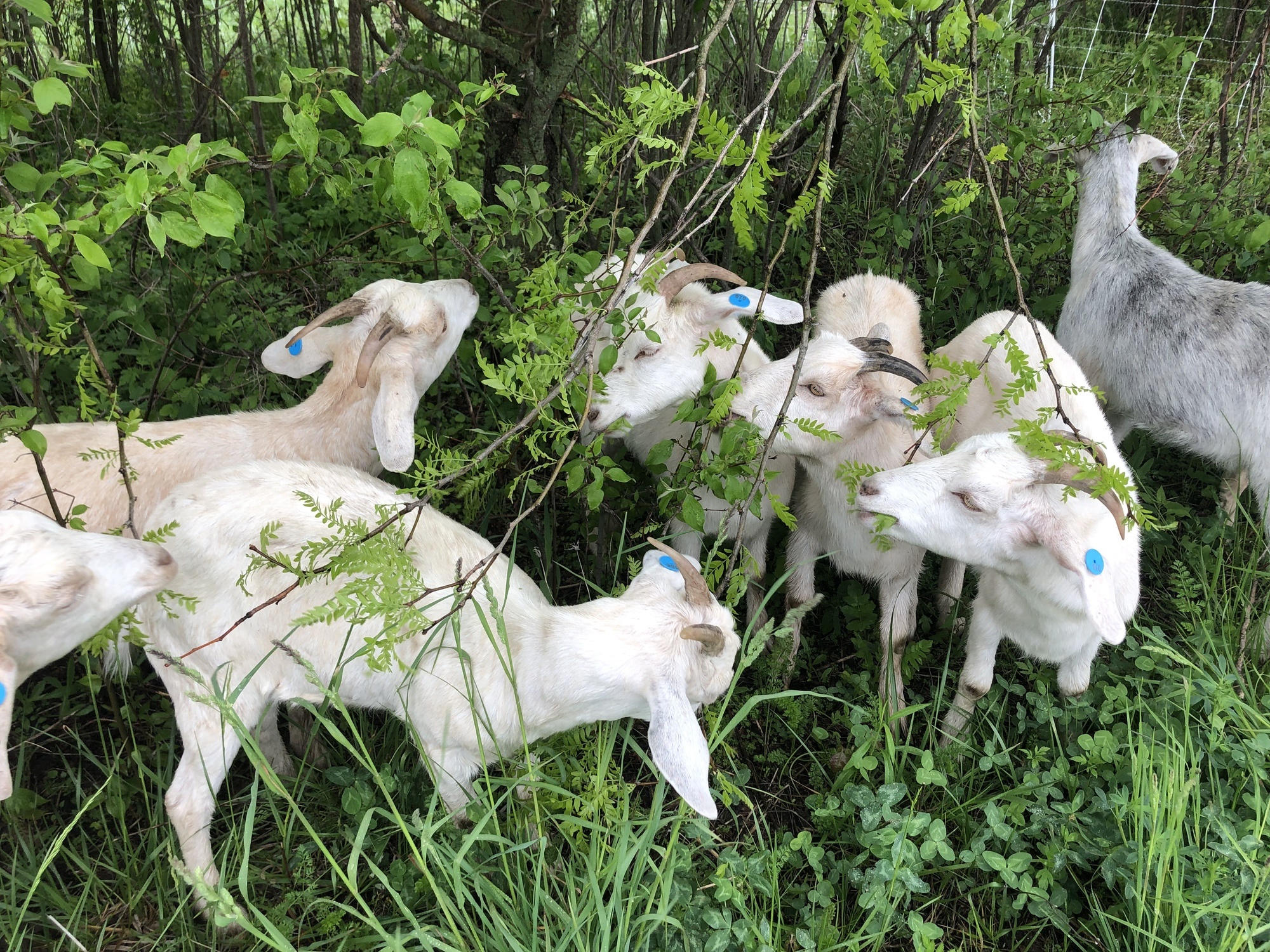
Beth Hoffman and her partner John Hogeland immediately converted the farm into something more sustainable, raising grass-finished cows, organic-in-practice veggies, and using goats to help clear brush.
Beth Hoffman
Our next step is we’re hoping to build a commercial kitchen, where we can process our own foods and rent it out to people who want to have small businesses, but also be able to do cooking and educational classes. We are also actively looking for people to join us on the farm (Please get in touch if you are interested!)
John and I are both 53 years old, and are aware that in 10 to 15 years, our bodies might not be able to do the physical work of farming. So we think a lot about what we can really accomplish here in this amount of time. What can our legacy be?
We both think that one of the things we might be able to do in our short time is help shift the culture of this area slightly so that what people eat matters more and the population gets to expand their ideas about what to cook. If people ate more of a range of foods, that could create more of a market for farmers wanting to grow things other than corn and soybeans. In the end, that is the shift that the planet needs.
